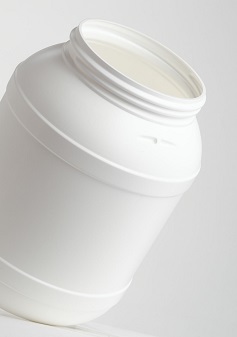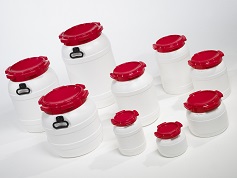By CurTec International
Hygiene Management Solutions
Hygiene management has become an important discipline that has its own acronym, HACCP (Hazard Analysis and Critical Control Points). This methodology was pioneered in the food industry in the early 1960s, specifically as a collaborative program between the Pillsbury Food Company, NASA and the US Army Laboratories to ensure astronauts’ foods were safe for space flights.
HACCP is a systematic preventative approach that is based on engineering management and failure modes and effects analysis (FMEA) to identify all potential critical hygiene failure areas and eliminate them from the production and delivery pipeline.
Since the mid 1990s, HACCP has increasingly been adopted by the pharmaceutical, biotech and fine chemicals industries to ensure that their products, too, remain safe and free from contamination.
Principles
The three original HACCP principles defined in the 1960s have now expanded to form the basis for current international standards such as the FAO’s Codex Alimentarius of 2009. This standard defines a complete safety and quality management system based on seven HACCP principles:
- Conduct a hazard analysis: determine potential safety hazards (biological, chemical, or physical properties that may cause a product to become unsafe) and identifies preventive measures that must be applied to control them.
- Determine critical control points (CCPs): the critical steps at which control can be applied to eliminate hazards or reduce them to acceptable levels.
- Establish critical limits: the permissible values within which hazards must be controlled at each critical point.
- Establish CCP monitoring requirements: ensuring that the process remains under control at each critical point.
- Establish corrective actions: steps to be taken when monitoring indicates a deviation from an established critical limit.
- Establish verification procedures: ensuring the HACCP system remains working as intended.
- Establish documentation protocols: covering all procedures and records appropriate to these principles and their application.
This HACCP methodology also lies at the heart of other Standards, such as ISO 22000, ISO 15378 (cGMP) and the Safe Quality Food Institute’s SQF 2000 Code.
The Role of Packaging in HACCP
The scope of HACCP has broadened from just the production process to encompass the entire supply chain, from source ingredients to delivery and storage. This means packaging becomes a critical element in ensuring correct hygiene management.
This operates on both negative and positive levels:
Substandard packaging can increase HACCP hazards and make control more difficult by allowing – or even introducing – contaminants into the pipeline.
High quality packaging can help ensure adequate HACCP by eliminating potential risks and maintaining originally defined critical limits throughout the supply chain.

CurTec hygiene management solutions
Contamination and quality-loss constantly threaten food, pharmaceutical and fine chemical products. When packing and shipping, manufacturers must foresee and control all potential risks with even the smallest amount of contamination having potential to cause product impairment.
The penalties for failure are severe. Cleaning a contaminated product without causing irreparable damage is difficult and expensive. Contamination not only leads to financial loss, but can also pose an irreparable reputational blow to the manufacturer.
Clean, robust and well-sealed packaging reduces these risks considerably.
The minimum requirements are that the packaging should be free from visible dirt, properly sealed and protected against splits and breaches. However, modern products often place more stringent demands on packaging hygiene.
CurTec International contributes to the hygiene management performance of its clients by supplying optically clean packaging that is proof against airborne and moisture-born contamination.
CurTec is an HACCP-certified manufacturer according to Codex Alimentarius and is currently preparing implementation of ISO 22000 and ISO 15378 (cGMP) certification.
In addition, CurTec can provide packaging solutions to meet specific HACCP requirements, using special testing equipment to guarantee extreme hygiene to provide clients with the extra levels of assurance needed. For example, CurTec supplies a leading manufacturer of optical fibre coatings with packaging that has been cleaned and sealed to Customer Specific Requirements.

CurTec also provides the specific in house particle contamination measurement needed to guarantee specific levels of cleanliness. Products taken from different stages of the line are rinsed with mineralized water, which is then successively filtered allowing residue to be measured and analysed. This allows preventative filtering or cleaning measures to be taken.
This video shows how the rinsing and analysis process works.
Resources
Click on Hygiene management solutions for more information.
Click on CurTec to contact the company directly
Supplier Information
Supplier: CurTec International
Address: Spoorlaan Noord 92, P.O. Box 25, 5120 AA Rijen, Netherlands
Tel: +31 88 808 2000
Fax: +31 88 808 2260
Website: www.curtec.com















